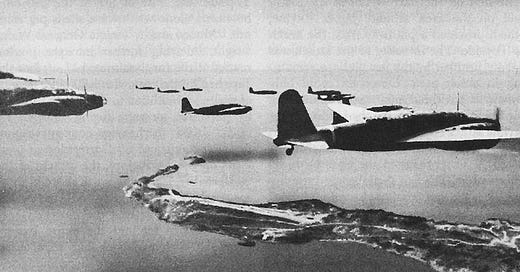By the middle of 1941, all across Southeast Asia, people were preparing for the possibility of war with Japan. To this end, General Douglas MacArthur had been pulled out of retirement and sent back to the Philippines to oversee a combination of American and Filipino troops charged with defending the islands.
(National WWII Museum)
Gradually reinforced as the year went on, by December he had 31,000 men. Numbers are one thing; but of the men MacArthur had, they were variously deficient in both training and equipment. Which was problematic. Because the Japanese were coming as part of their colossal strike out across the Pacific at the beginning of December 1941. There were four reasons to aim for the Philippines: To deny it as a forward base for American forces, to act as a staging post for their own further ambitions in the region. They also wanted to secure lines of communication all the way back to Japan itself and take out potential Allied resistance ready for their assault on Australia and the Solomon Islands’ which was slated for early 1942.
First Strike
On 8th December 1941, news reached the Philippines that Pearl Harbour was under attack. A few hours later, it was their turn. Leanne Noe, born in San Francisco but raised in the Philippines where her father was a mining engineer, took the sound of the bombs for an American exercise from where she sat at Camp John Hay, at Baguio.
We could hear the rumble of the bombs falling, and the aeroplanes… we didn’t give it much thought. And then… we went to the cathedral… in the middle of mass there were more aeroplanes and bombing and the priest said I think everyone needs to go home, and if those aeroplanes fly over again lie flat in a ditch somewhere. So that’s what we did.
Closer to the action, there was no room for doubt. Glenn Frazier of Fort Deposit, Alabama, was serving with 75th Ordnance Depot Company and stationed on the Bataan Peninsula.
We walked to the edge of the bluff… we watched the Japanese bombers fly in in perfect formation and bomb Corregidor… We looked at each other and said, ‘we’re at war.’ That really touched me. I had problems coming from a Christian family even thinking about killing anybody. And I thought, boy this is going to be tough, because even through we’re ordnance we would probably be faced with that…
Japanese aircraft over Corregidor (Wikipedia)
Keep reading with a 7-day free trial
Subscribe to Alex Churchill’s HistoryStack to keep reading this post and get 7 days of free access to the full post archives.





